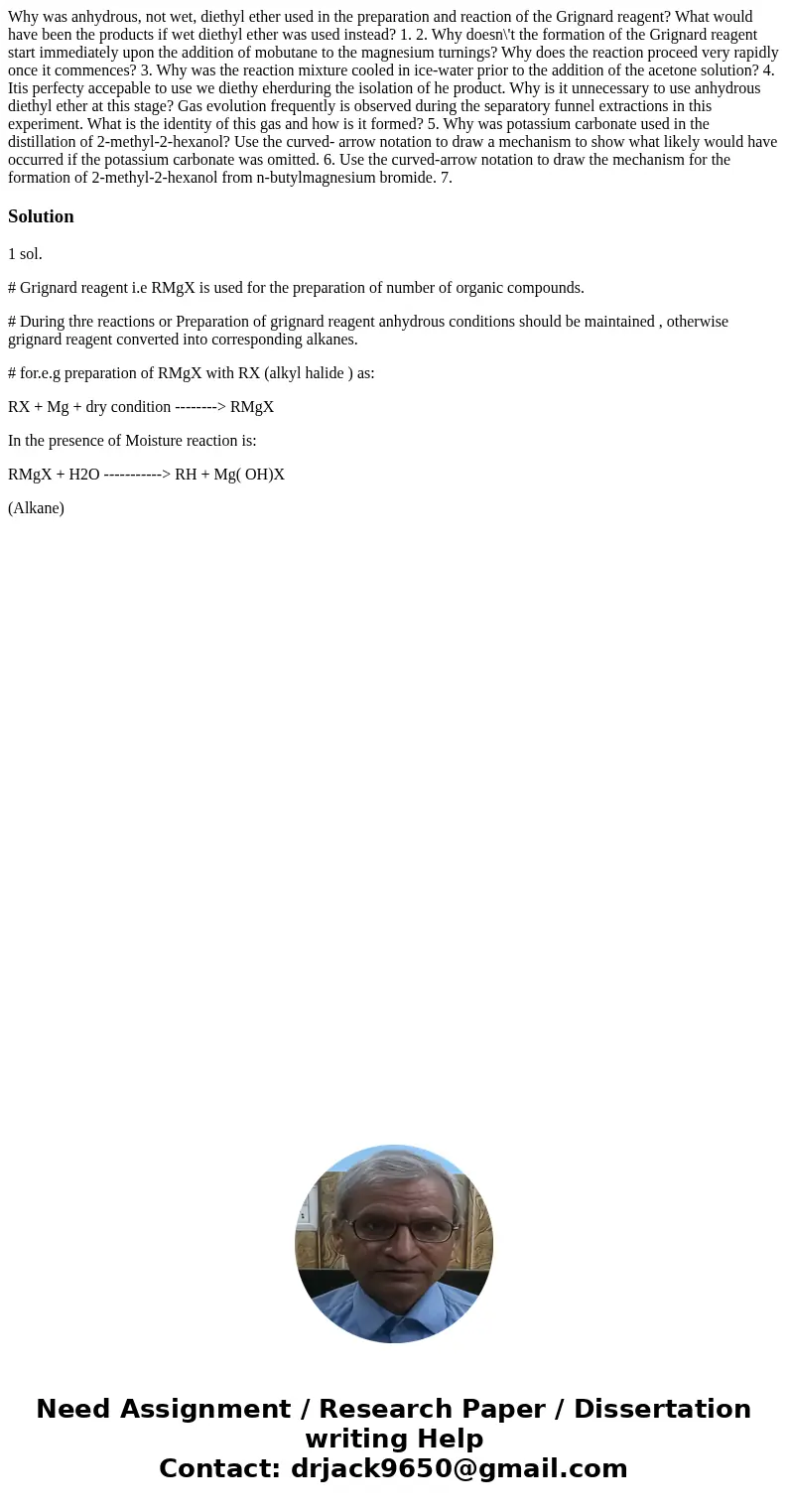Why was anhydrous not wet diethyl ether used in the preparat
Why was anhydrous, not wet, diethyl ether used in the preparation and reaction of the Grignard reagent? What would have been the products if wet diethyl ether was used instead? 1. 2. Why doesn\'t the formation of the Grignard reagent start immediately upon the addition of mobutane to the magnesium turnings? Why does the reaction proceed very rapidly once it commences? 3. Why was the reaction mixture cooled in ice-water prior to the addition of the acetone solution? 4. Itis perfecty accepable to use we diethy eherduring the isolation of he product. Why is it unnecessary to use anhydrous diethyl ether at this stage? Gas evolution frequently is observed during the separatory funnel extractions in this experiment. What is the identity of this gas and how is it formed? 5. Why was potassium carbonate used in the distillation of 2-methyl-2-hexanol? Use the curved- arrow notation to draw a mechanism to show what likely would have occurred if the potassium carbonate was omitted. 6. Use the curved-arrow notation to draw the mechanism for the formation of 2-methyl-2-hexanol from n-butylmagnesium bromide. 7. 
Solution
1 sol.
# Grignard reagent i.e RMgX is used for the preparation of number of organic compounds.
# During thre reactions or Preparation of grignard reagent anhydrous conditions should be maintained , otherwise grignard reagent converted into corresponding alkanes.
# for.e.g preparation of RMgX with RX (alkyl halide ) as:
RX + Mg + dry condition --------> RMgX
In the presence of Moisture reaction is:
RMgX + H2O -----------> RH + Mg( OH)X
(Alkane)

 Homework Sourse
Homework Sourse